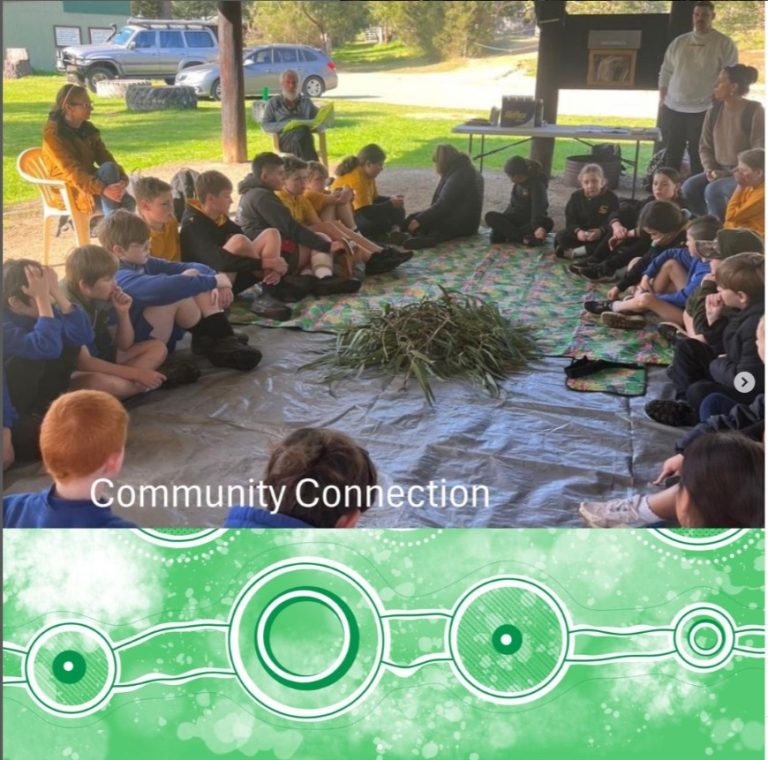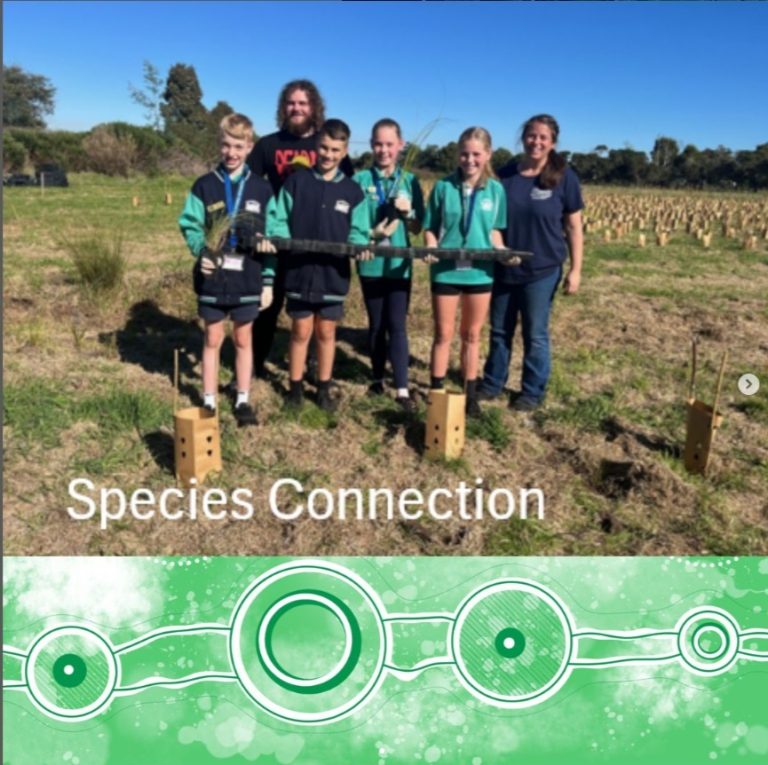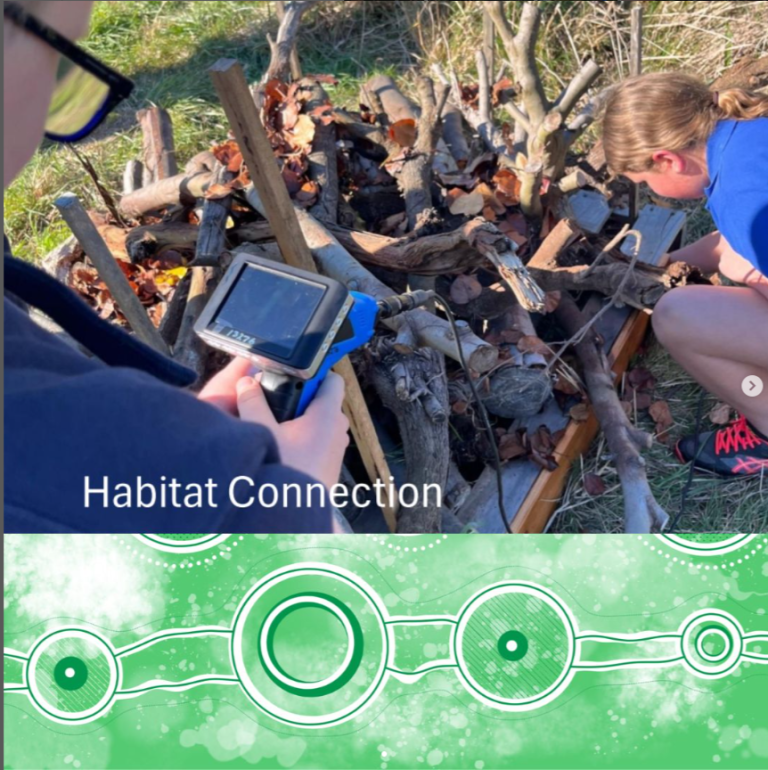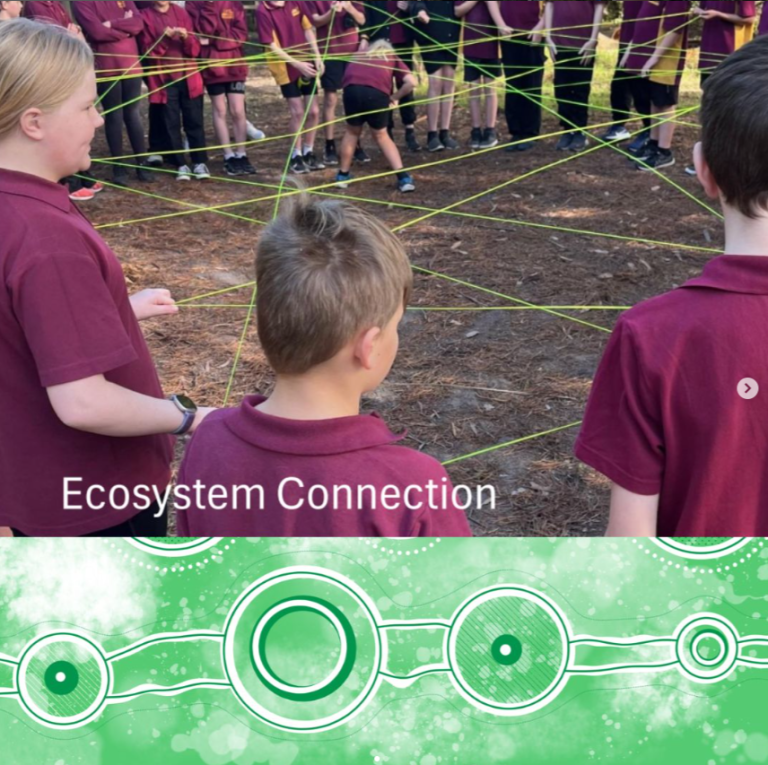- Home
- Caring for Country
Caring for Country
Wominjeka the Caring for Country Landcare Connection Student Forum
Throughout May and June, the WPCLN ran a Caring for Country Landcare Connection program. This program was designed to provide an enriching cultural and environmental education experience for students of the Western Port Catchment.
To inspire these students our future leaders, to build healthy connection to the diverse environments of the catchment. Increasing the opportunity for future generations to become involved in volunteering and enhance and protect their local environment.
The Western Port Catchment Landcare Network partnered with the Bunurong Land Council Aboriginal Corporation to provide a series of cultural and ecological focused excursions. The Caring for Country Landcare Connection program was funded through a Parks Victoria Innovation fund, provided by the Victorian State Government.
We had a wonderful time on country with Jindivick Primary School, Labertouche Primary School, Gembrook Primary School, Neerim South Primary School, St James Catholic School, Nar Nar Goon and Lang Lang Primary School.
To conclude the program Thursday 20th June the Caring for Country Landcare Connection Forum was held at Deep Creek Eco Reserve in Pakenham Over the next week we will share all the fun and learning experiences with you.
Be sure to like and comment our socials and if you would like more information, please reach out to facilitator@wpcln.org.au

First Excursion

The Caring for Country Landcare Connection programs first excursion focused on community and what bringing community together means and how Landcare share information across the catchment and the Victorian landscape.
The excursion provided a great opportunity to look at examples of language and local stories. The Labertouche Primary School and Jindivick Primary School students were led around the Cannibal Creek Recreation Reserve by the Western Port Catchment Landcare Network, Bunurong Land Council Aboriginal Corporation and a Cannibal Creek Recreation Reserve Committee of Management representative, Garry Burns.
This committee specifically designed this space to be used for holding gatherings and yarning circles. A space to connect with country and celebrate the diversity of the land. Designed around the ecological changes within the seven Kulin Nation Seasons. Students were encouraged to creatively tell stories and communicate their learnings. The group recorded a greeting in language and designed cards to send via mail to the wider community.
Second Excursion

Thee Landcare groups of the Western Port Catchment Landcare Network, work across the landscape improving and restoring the habitats of threatened species like the Southern Brown Bandicoot.
The second excursion of the program invited Gembrook Primary School students to a Melbourne Water managed retired grazing lease that the Cannibal Creek Landcare Group are rehabilitating from weed infested vacant land to vital habitat.
This excursion focused on practical applications of small mammal remote camera surveying, habitat restoration and understanding country in a cultural sense.
Throughout this excursion students identified the ideal habitat of the rare and threatened Southern Brown Bandicoot and the use of remote camera surveying and appropriate habitat rehabilitation techniques with planting appropriate species for habitat and food.
Living Culture, discussed concepts of traditional plant uses and its respective use of place in relation to caring for country to promote reciprocity. Students were provided the opportunity to engage in tree planting and its practical application in Landcare’s action-based works.
This program engaged students to understand how modified landscapes and human decisions and actions have influenced the landscape throughout time and had significant impact on the environment affecting natural ecosystems.
Through investigation students saw firsthand how volunteer groups such as Landcare play crucial roles in improving natural ecosystems by engaging in conservation restoration.
Third Excursion

The third excursion of the Caring for Country Landcare Connection program focussed on habitat rehabilitation processes for the Southern Brown Bandicoot at a Cannibal Creek Landcare project site in Garfield.
Students were led with onsite learning of how to create modified and temporary habitat solutions and how these modifications can assist with rehabilitation projects.
The Neerim South Primary School students discussed habitat creation and interventions with the Landcare Network and assisted in the construction of a Bandicoot Bungalow. Students were then instructed how to use a nest box monitoring camera to simulate the practice of monitoring the artificial habitat. Students discussed the landscape of the catchment, its natural features and biodiversity.
Exploring the concepts of modified environments and how rehabilitation of the land and waterways can create important bio-links and habitat corridors for threatened species across the Western Port Catchment.
Onsite learning enquiry looked at how land managers and volunteers make accurate
assumptions of the project sites biodiversity. How modified environments are common across the Westernport Catchment, and this led to discussions with Living Culture on traditional cultural practices that were commonplace to promote increased biodiversity in areas utilised by Bunurong Peoples and Traditional Owner groups, practices that are still valid tools today. The students participated in planting some indigenous plants to assist the areas rehabilitation work and creating future habitat for threatened species.
Fourth Excursion

The fourth excursion enabled students from St. James Catholic Primary in Nar Nar Goon, to travel southward to the Koo Wee Rup Observation Tower. Landcare and Bunurong Land Council, representatives engaged the students in activities such as field mapping, land surveys and data collection to enhance their understanding of geographical principles.
Mapping is a great planning and reporting tool for successful environmental works. Students were shown how to draw a mud map, identified specific geographical concepts and how to use a GPS unit. Students mapped a variety of features at the excursion site and created a map, collecting way point data with a GPS unit.
Incorporating cultural sensitivity and respect for aboriginal perspectives throughout the excursion, discussions included conversations of connection to place, the importance of songlines, storytelling and artwork. Students had time to creatively design a journey map describing
the lay of the land and the story of community through symbols. Learning enquiry led to discussions of land use and what evidence is held by the land to show the journeys that have been traversed before us. (Examples; coastal and freshwater middens, scar trees, hearths and stone artifacts and tools)
This program allowed students to understand how modified landscapes and human decisions and actions have influenced the landscape and had significant impact on the environment affecting natural ecosystems. Through investigation students could relate to how volunteer groups such as Landcare play crucial roles in improving natural ecosystems by engaging in conservation restoration and how mapping plays an important role in planning, data collection and reporting
Final Excursion

The final excursion was held at the Lang Lang Primary school Arboretum. Lang Lang Primary School students walked up to this amazing historical school site. The Arboretum is a mixed environment filled with exotic and indigenous plant species. The space is surrounded by a variety of farm and agriculture land. It is fragmented habitat, and together we discussed this
fragmentation and how Landcare is aiming to connect these places with bio-links, creating food and habitat for local native species and their movement. The students explore this space every year with the wonderful volunteers from the Westernport Swamp Landcare Group. The Landcare group fund through various grants each year a Bug Blitz program.
The Caring for Country Landcare Connection program enhanced this year’s Bug Blitz by inviting the students to discuss food-chains, species diversity, food production and habitat connection. Bunurong Land Council, Strong Country Ranger discussed traditional cultural land practices such as cool burning techniques that assisted the modification of environments by providing optimum growth of plants and fungi. In addition, providing favorable conditions for native fauna allowing for future resources and a lifestyle of reciprocity with the land.
This excursion allowed students to understand how locally the modified landscapes and human decisions and actions influence the environment. Through investigation students could infer that cultural land practices are still valuable techniques in improving and managing native natural ecosystems today.


